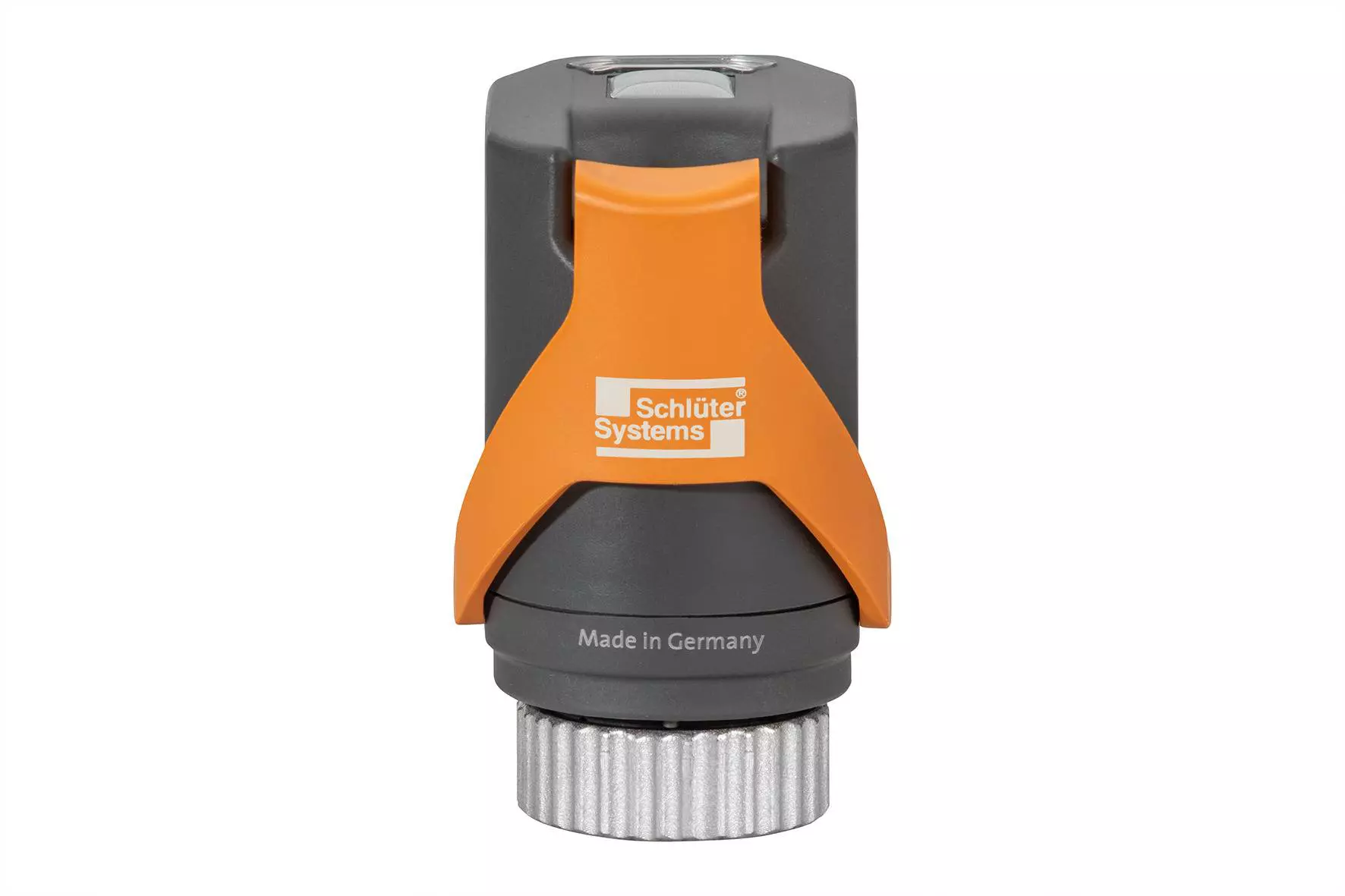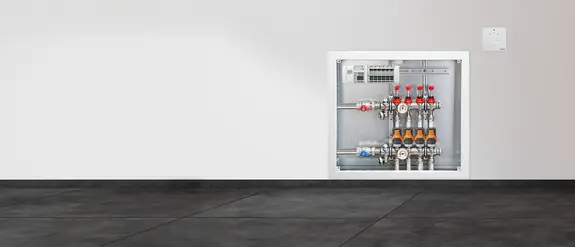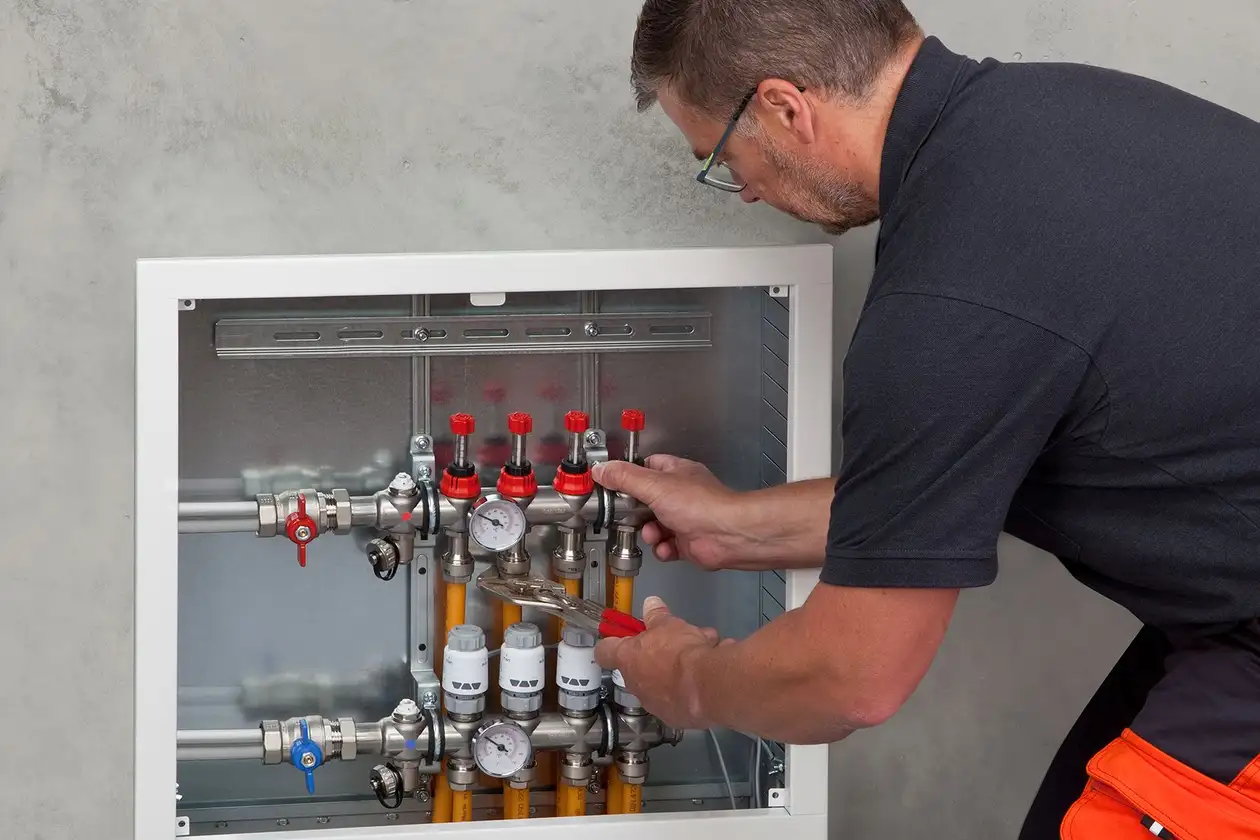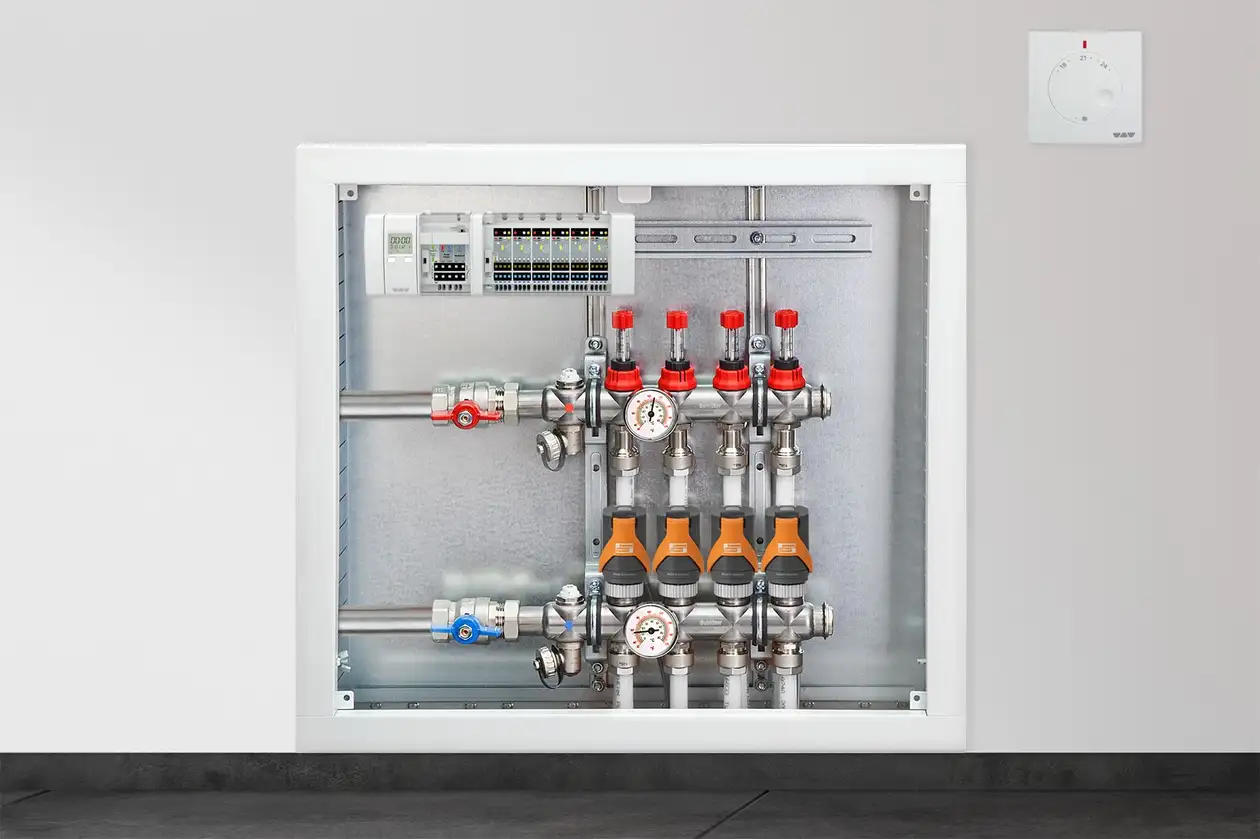
BEKOTEC-THERM-EAHB
Intelligent, self-learning actuator to guarantee adaptive hydronic balancing
Hydronic balancing is indispensable for optimum heat distribution and energy savings. What procedures can be used to carry out this balancing?

An efficient floor heating system is not only a source of cosy warmth, but also an investment in comfort and energy efficiency. Hydronic balancing is indispensable to ensure that your floor heating system functions optimally and that you can benefit from lower energy costs in the long term. Our intelligent, self-learning systems even enable you to benefit from adaptive hydronic balancing that automatically optimises your energy consumption.

Hydronic balancing is a procedure used to optimise water distribution in the heating system. The intention is to ensure that all heating circuits – and, hence, rooms – are supplied with the right amount of heating water according to their heating requirements.
As a general rule, the water in the heating system seeks the path with least resistance, which means that it prefers to flow through short rather than long heating circuits. As a result, rooms that are close to the boiler are often too warm, whereas rooms that are further away remain uncomfortably cold. If this imbalance also allows overly warm return water to flow to the boiler, there is a risk that the system will switch off prematurely. This too frequent cycling also leads to the system losing efficiency.
Hydronic balancing eliminates this oversupply or undersupply of heating water in the individual heating circuits. The result: Optimised and energy-efficient heat distribution – providing significantly more living comfort in all rooms with lower energy costs at the same time.
A floor heating system distributes the heat pleasantly and evenly throughout the room – and hydronic balancing helps you maximise this benefit! It ensures that each room also receives the exact amount of heating water required and that you can enjoy cosy warmth in all the rooms without draughts. Perfect living comfort!
The floor heating system is a sustainable and energy-efficient solution. Hydronic balancing lets you benefit from this advantage twice over: Optimising the heating water flow means the heating system can work more efficiently, further reducing your energy consumption. That's is good for the environment – and for your heating bill!

Static hydronic balancing is the conventional method of making manual adjustments to valves and regulators. These settings are based on calculations that take into account the flow rates and pressure loss of each heating circuit. The specialist then configures the static actuators. This method requires meticulous planning and execution to ensure that the default settings are correct.

This is in contrast with adaptive hydronic balancing that makes it possible to adjust the flow rates dynamically and automatically in real time. This requires a suitable intelligent actuator with sensors that continuously measure the flow and return flow temperature of the respective heating circuit and adjust the optimum flow rate through stroke movements.
| Static hydronic balancing | Adaptive hydronic balancing | |
|---|---|---|
| Requires prior calculation | ||
| Needs a manual setting on the heating circuit distributor | ||
| Intelligent, adaptive adjustment | ||
| Simple installation | ||
| Self learning |
Adaptive hydronic balancing offers significant advantages over static hydronic balancing, especially in floor heating systems such as Schlüter-BEKOTEC-THERM. Not only does automatic and continuous adjustment of the flow rates optimise energy consumption, it also increases comfort for the occupants – in every room! Even though the initial investment is higher, adaptive hydronic balancing is a forward-thinking solution that offers economic as well as ecological benefits in the long term.
We offer you a choice of different system products that can be used to integrate hydronic balancing into your floor heating system both adaptively and statically. Because no matter which option you choose, it is better than not considering hydronic balancing at all!